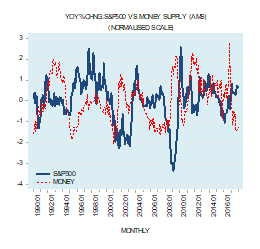As reported yesterday on Mises.org, there were some very encouraging statements in Mervyn King’s Monday speech to the Buttonwood Gathering in New York.
King noted that “Of all the many ways of organising banking, the worst is the one we have today”. After considering various possible reforms, he moved on to some that were “more radical” (my emphasis):
One simple solution, advocated by my colleague David Miles, would be to move to very much higher levels of capital requirements – several orders of magnitude higher. A related proposal is to ensure there are large amounts of contingent capital in a bank’s liability structure. Much more loss- absorbing capital – actual or contingent – can substantially reduce the size of costs that might be borne outside of a financial firm. But unless complete, capital requirements will never be able to guarantee that costs will not spill over elsewhere. This leads to the limiting case of proposals such as Professor Kotlikoff’s idea to introduce what he calls “limited purpose banking” (Kotlikoff, 2010). That would ensure that each pool of investments made by a bank is turned into a mutual fund with no maturity mismatch. There is no possibility of alchemy. It is an idea worthy of further study.
Another avenue of reform is some form of functional separation. The Volcker Rule is one example. Another, more fundamental, example would be to divorce the payment system from risky lending activity – that is to prevent fractional reserve banking (for example, as proposed by Fisher, 1936, Friedman, 1960, Tobin, 1987 and more recently by Kay, 2009).
In essence these proposals recognise that if banks undertake risky activities then it is highly dangerous to allow such “gambling” to take place on the same balance sheet as is used to support the payments system, and other crucial parts of the financial infrastructure. And eliminating fractional reserve banking explicitly recognises that the pretence that risk-free deposits can be supported by risky assets is alchemy. If there is a need for genuinely safe deposits the only way they can be provided, while ensuring costs and benefits are fully aligned, is to insist such deposits do not coexist with risky assets.
On regulation, King notes
We certainly cannot rely on being able to expand the scope of regulation without limit to prevent the migration of maturity mismatch. Regulators will never be able to keep up with the pace and scale of financial innovation. Nor should we want to restrict innovation. But it should be undertaken by investors using their own money not by intermediaries who also provide crucial services to the economy, allowing them to reap an implicit public subsidy.
He concludes
There is no simple answer to the too important to fail nature of banks. Maturity transformation brings economic benefits but it creates real economic costs. The problem is that the costs do not fall on those who enjoy the benefits. The damaging externalities created by excessive maturity transformation and risk-taking must be internalised.
A market economy has proved to be the most reliable means for a society to expand its standard of living. But ever since the Industrial Revolution we have not cracked the problem of how to ensure a more stable banking system. We know that there will always be sharp and unpredictable movements in expectations, sentiment and hence valuations of financial assets. They represent our best guess as to what the future holds, and views about the future can change radically and unpredictably. It is a phenomenon that we must learn to live with. But changes in expectations can create havoc with the banking system because it relies so heavily on transforming short-term debt into long-term risky assets. For a society to base its financial system on alchemy is a poor advertisement for its rationality.
Change is, I believe, inevitable. The question is only whether we can think our way through to a better outcome before the next generation is damaged by a future and bigger crisis. This crisis has already left a legacy of debt to the next generation. We must not leave them the legacy of a fragile banking system too.
Related articles:
- Robert Peston, BBC – Mervyn King says banking must be reinvented
- The Telegraph – Banks should be broken up, Bank of England Governor Mervyn King warns




Yes – Mervyn King is intriguing. Of all the heads of the major central banks, he seems the most sympathetic to more radical reform. He’s always stopped short of suggesting an end to central banking, mind.
Taking a cynical perspective…
Governments and central banks provide three things that encourage risk taking. They provide lender-of-last-resort support, bailouts and deposit insurance.
So, it’s not surprising that King emphasises maturity transformation as a cause of risk. Since, that is something that is caused by the market not him.
Good summary of where we are now. But I don’t agree with Mervyn King’s claim that “Maturity transformation brings economic benefits but it creates real economic costs…”. I just don’t see where the benefits are, i.e. I favour zero maturity transformation. I’ve set out my reasons briefly below. Plus I’ve set out a longer explanation here:
http://ralphanomics.blogspot.com/2010/09/flaw-in-maturity-transformation.html
The optimum amount of borrowing and investment is achieved where the marginal utility of borrowing and investment equals the marginal disutility of the consumption forgone to fund said borrowing and investment. And this optimum can only occur where lenders are AWARE of what consumption is forgone and for what period.
Funds that are deposited at banks for short periods are designed by depositors to pay for consumption when the depositor desires and not before. If a country moves from a regime where maturity transformation (MT) is not allowed, to a regime where it IS allowed, aggregate demand (AD) is raised.
Assuming AD is at the maximum allowed by inflation, then AD must be reined in somewhere (e.g. less is spent on health, education or cars). Thus in effect (and continuing with the latter example) health service patients and car buyers make sacrifices to enable more than optimum borrowing and investment carried out by others.
Ralph,
I’ve heard this view several times from Austrian economists, but you’re the first post-Keynesian I’ve heard supporting it. If that’s the little bit of Austrian economics that’s being imported by the post-Keynesians then I’m disappointed.
I agree with maturity transformation and I think the arguments against it are hyperbolic and overdone. To understand the situation it’s necessary to compare it to other similar ones.
Let’s suppose that you buy a new PC from Dell. That PC may be delivered to your house by a third party. Also, the components within it are not all of your choosing. If you buy model X that will contain whatever components Dell have decided to put in that model. The assets, goods and services that Dell use to supply your PC are chosen by Dell, not by you. You choose the model and the specifications, if the PC doesn’t meet the relevant contracts and laws then Dell are liable. Specifically, the companies shareholders are liable.
If the customer wishes he or she can specify the computer in more detail, at a price, or go to a company that builds fully custom computers.
The situation is exactly the same with financial relationships. It’s easiest to explain this without going into on-demand accounts. Let’s suppose the saver buys a bond. The bank take the cash the saver lends them and they lend it out. The saver does not in any sense lend to the banks borrowers, the bank lend to them. Any saver can decide if he or she wants to look in detail into how the bank provide that product, just as customers of computer companies may investigate in detail how the computers they are thinking of buying work. It is wise for the saver to investigate the bank somewhat to protect themselves from picking a bank that is on the brink of failure. But, the saver has no reason to investigate the maturity profile if they don’t want to. There is no compelling reason why they should, it’s the bank’s responsibility. The customers responsibility to himself or herself is to pick a sound bank.
A law preventing maturity mismatching would be like a law that specified how a car engine should work. It’s not something that’s necessary because it’s worked out between the market participants.
Now, I agree that state-provided deposit insurance makes savers much more reckless than they would be otherwise, but that isn’t a reason to ban maturity mismatching. It is a reason to think hard about ending state-provided deposit insurance.
It must be understood what maturity mismatching provides. Through the 20th and 19th centuries and up to the present day many industrial investment projects have been funded by the savings of ordinary people. Entrepreneurs and shareholding capitalists have always grown their companies by borrowing from banks against existing assets. Banks have provided that capital by borrowing from savers and current account holders. Those investment projects have been generally longer term than the term of saving. Except for rich savers most savers don’t have much choice in this matter they can’t risk tying up capital for decades. So, without the possibility of maturity transformation investment would be severely curtailed. Had maturity transformation being banned in the 19th century we would not have anything like the level of wealth we have today, indeed the industrial revolution may not have happened.
If such a policy were implemented in Britain today then it would not affect foreign savers. We would not see the alleged benefits from removing maturity transformation. Instead, as the savings pool from native savings decreases we would see it replaced by investments made from abroad from places where maturity matching remained legal.
Last but not least, there is little evidence that maturity transformation was really the problem in past banking crises or the recent crisis. Certainly some commentators and insiders from defunct banks have claimed that the assets of those banks were generally good and that their bank failed because they weren’t able to get the short term credit to tide them over a maturity mismatch. I don’t believe that this was generally true. Even during the period of the “credit crunch” there were still huge volumes of loans being made between financial institutions. That indicates to me that the reason some institutions couldn’t get loans was because they were thought to be bankrupt already by their peers who would normally loan to them.
Those on the left correctly grasp that the managers of failed banks have good reason to claim that the Fed set interest rates too low. Claiming that is an attempt to absolve themselves of blame. I think that those bankers are right about that, but that’s because I believe Mises and Hayek’s analysis, not because I believe the banker. On the other hand few people have realised that those same failed bankers have an interest in promoting the view that the “credit crunch” was a form of panic because that would absolve them of the blame for making bad loans. The truth is that the credit crunch began because of real concerns over toxic assets in the US. If US banks in 2007 had matched maturities then they would still have been carrying similar amounts of bad loans, and a similar number of them would have failed.